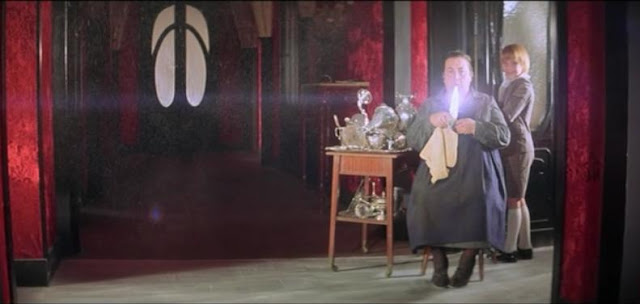I grew up on a homesteader-type spread in the middle of Indiana. We lived in a tiny blue cottage on the edge of 20-ish acres of forest and marsh. The cottage was as tired and achey as a septuagenarian and correspondingly vocal. The largest of the outbuildings was a large, red barn that we only partially used, and its darkest rooms were full of rusted tools and small, skittering shadows. Night was not orange but black, black, black. But I digress. When I was extra-tiny, before it occurred to me that my surroundings could be frightening, my mom read me fairy tales. Old World fairy tales. The Brothers Grimm's "Little Red Cap" was the first work of fiction that gave me The Fear.
 |
| Arthur Rackman: "Little Red Riding Hood" |
I had the most ferocious nightmares about wolves for months afterward, and one of my first memories is my mother apologizing for reading me this story.
It's easy to romanticize the Girl Explorer/Wolf Meat phase of my childhood, because children have been poking around in the woods and scaring the hell out of themselves for eons. But the Event that turned the pokin' stick into a remote control happened when I was ten and my dad finally allowed a television and VCR player into the house. I was ecstatic because that meant I finally got to see...
Wait, let me back up...
I remember being incomparably excited about three things in my childhood:
2) Being tall enough to ride the Vortex at King's Island
3) JAWS
From the moment Jaws went into the VCR, I was so engrossed that I lost all concept of self. My parents were as entertained by me as they were by the film because, although I started out sitting about 3 feet in front of the screen, by the film's end I had scooted and scrambled all the way across the living room and was wedged and cowering against the couch. For the next five years, I had wolf-grade nightmares about sharks. The dreams went something like this: I would be walking through my school's gymnasium and the floor would open underneath me and I would plunge into the ocean with one or many sharks circling me. I would wake up with my sheets twisted off the bed, as if I had been trying to swim. The nightmare didn't always end right away because, in that heightened state of arousal, I would sometimes see Frankenstein's Monster silhouetted in my bedroom door or hear wet footsteps coming up the hill from the marsh. No matter how much teenaged hormones dampened my lively imagination, sharks would sometimes transport me back to that wonderful, porous childhood mindset.
Reading over this, it sounds like a set of reasons to hate horror films. What makes one person love being scared and another hate it? I'm trying to imagine what went on when I was being assembled in my mother's womb. There's a big production line and a switchboard for turning on and off certain genes. The workers are all tiny forest animals, and there's a drunken rabbit at the switchboard.
God gene off!
Horror gene on!
Allergic to...everything!
Cries during previews!
Man...this kid's gonna be a WEIRDO!
Gary- send more tequila!
And out I pop, poking things with sticks and trying to sneak onto grown-up roller coasters and peeking from between my fingers at the movie theater.
So, that explains that or, rather, explains nothing. Because, as tempting as it is to "p-shaw" at the thought that liking horror means anything about me, it quite obviously does. But that's for next time, and now's for sleeping.



















